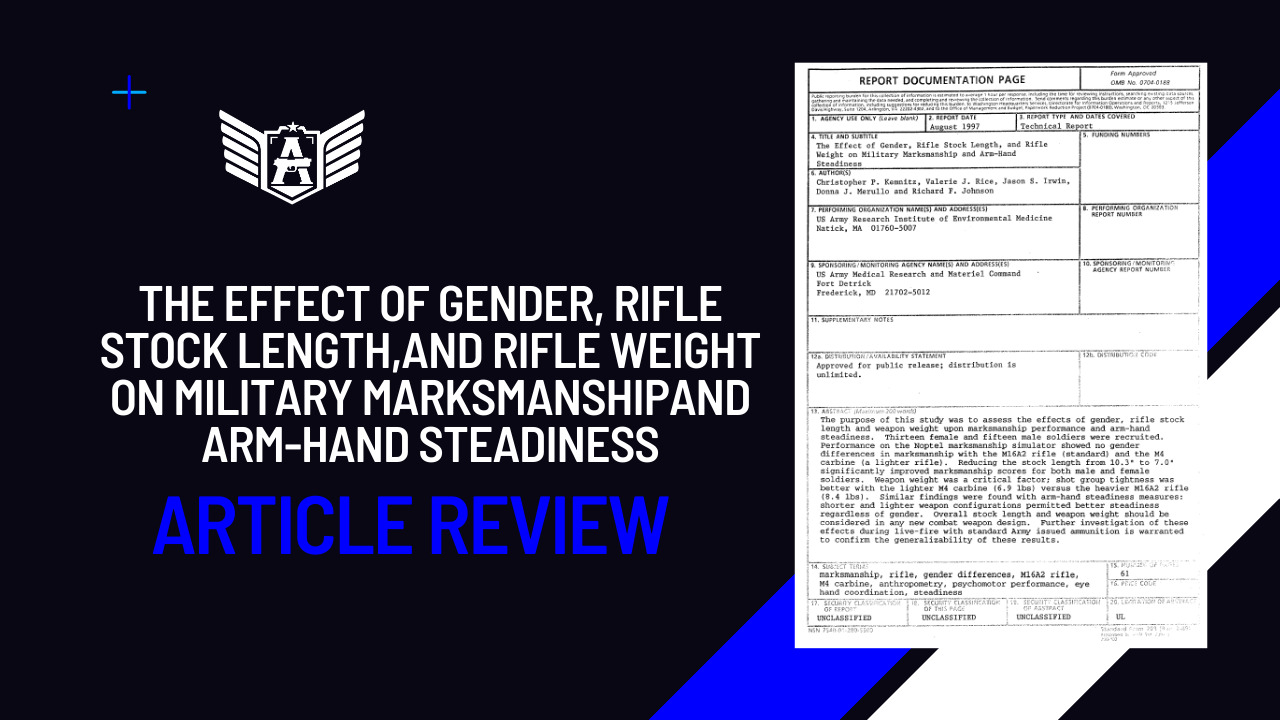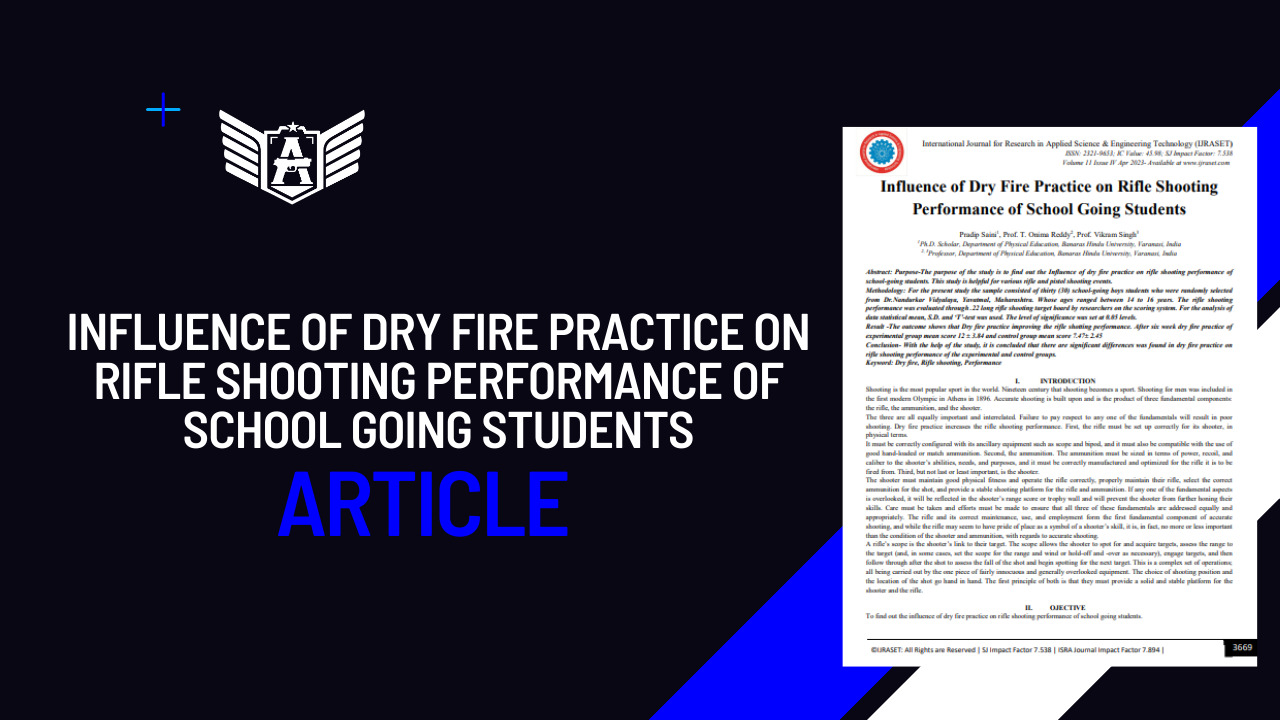This study aimed to investigate potential gender differences in marksmanship performance among male and female soldiers, exploring whether reducing weapon weight and stock length could enhance marksmanship. Prior research had hinted at gender-related variations in marksmanship, possibly tied to upper body strength and endurance. Additionally, the study considered the hypothesis that shortening the rifle stock might boost stability and improve overall performance. Limited quantitative data existed regarding gender differences in marksmanship using the standard U.S. Army-issued M16A2 rifle, but the recent introduction of the M4 carbine, a smaller and lighter version, provided an opportunity to explore these aspects further.
The participants, comprising thirteen female and fifteen male soldiers, underwent assessment with both the M16A2 rifle and the M4 carbine. Surprisingly, no discernible gender differences emerged in marksmanship performance with either weapon. However, a significant improvement was noted when stock length was reduced from 10.3″ to 7.0″, evident in enhanced marksmanship scores and tighter shot groups, irrespective of gender. The M4 carbine demonstrated superior shot group tightness compared to the M16A2 rifle. Arm-hand steadiness exhibited no significant gender differences, but both genders benefited from reduced stock lengths (7.0″ and 8.8″) in minimizing time off target. The M4 carbine, overall, outperformed the M16A2 rifle in reducing time off target and errors.
Participants reported the M4 carbine as easier to use and more comfortable, with less pain and discomfort compared to the M16A2 configurations. The study concluded that gender differences were negligible in marksmanship between male and female soldiers using the M16A2 rifle and M4 carbine. Notably, reducing stock length and weapon weight proved beneficial for both genders, influencing overall marksmanship and arm-hand steadiness. The findings suggest that stock length and weapon weight are crucial considerations in designing combat weapons, impacting marksmanship significantly. Further investigation with live-fire exercises and standard Army-issued ammunition is recommended to validate these results.




CONCLUSIONS
- No gender difference in marksmanship performance was observed with either the M16A2 rifle or the M4 carbine.
- Reducing stock length from 10.3″ to 7.0″ significantly improved marksmanship scores, and reduced the distance of shot groups from the center mass of the target.
- Shot group tightness was significantly better with the M4 carbine (6.9 lbs) versus the M16A2 rifle (8.4 lbs).
- No significant gender difference was observed in arm-hand steadiness between male and female soldiers.
- Shorter stock lengths (7.0 and 8.8″) significantly reduced mean time off target in the arm-hand steadiness task.
- Time off target was significantly reduced with the M4 carbine overall versus the M16A2 rifle.
- The number of errors counted was significantly less with the 7.0 inch stock versus both the 8.8 and 10.3 inch stock lengths.
- Errors were significantly reduced overall with the M4 carbine versus the M16A2 rifle.
- Subjects rated the M16A2 weapon configurations (stock lengths 7.0, 8.8,10.3, and 11.0″) harder to use and reported feeling more fatigued following testing with these weapons versus the M4 carbine.
- The M4 carbine was rated easier to use and more comfortable than the heavier M16A2.
- Significantly more pain and discomfort was reported by subjects following testing with the M16A2 configurations versus the M4 carbine.




